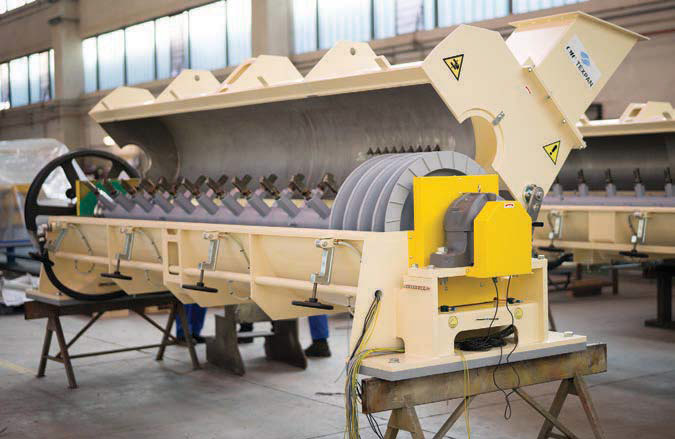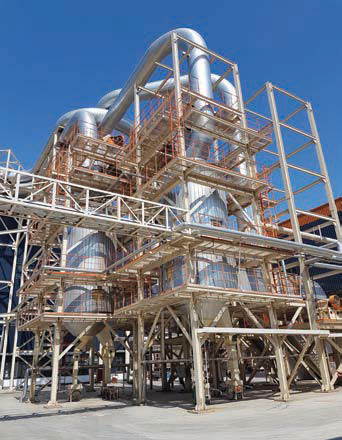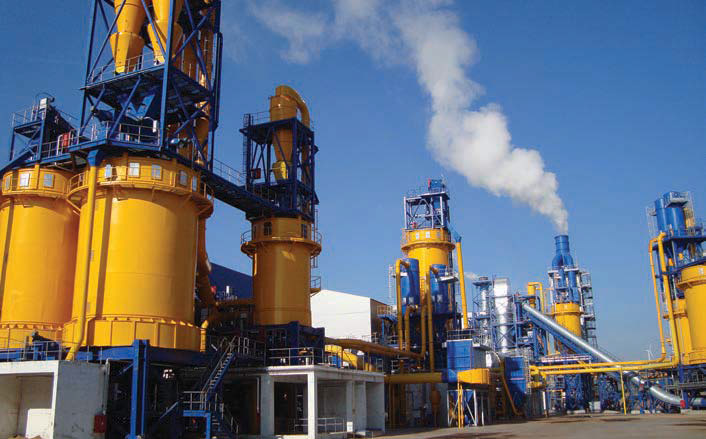Together and alone
29 August 2018Since it became 100% owned by Siempelkamp, CMC Texpan has been able to make some positive changes to the way it manufactures its products. Mike Botting visited Colzate to bring this report
The full takeover of CMC Texpan by complete line supplier Siempelkamp was a gradual process, taking place in the final years before the founder of the company, Dario Zoppetti, retired in 2013. Often that leads to a loss of identity of the company which is taken over, but that definitely hasn’t happened to CMC Texpan.
“We did not lose our identity, but consolidated it and our activities in direct sales have in fact grown in the past year, as well as our sales through Siempelkamp,” said Marco Granzotto, sales manager for CMC Texpan.
In 2017, CMC Texpan’s turnover reached €22m. It is not straightforward for the company to give a figure for 2018. This is because, with the continuing integration into the Siempelkamp family, some ancillary manufacturing activities have been transferred to other group units. However, the company expects to equal the figure achieved for 2017, which would be three million Euros over the budget for the year.
The company employs around 80 onsite staff, plus 10-15 external staff members. CMC Texpan is very busy and its design/ engineering, and manufacturing, are both under a lot of pressure, said the sales manager.
One of the main reasons that led to the relocation of some fabrication activities to other units of the Siempelkamp Group was the desire to improve service availability, especially in the South East Asian market.
In fact, the fabrication of some components in production units closer to the installation sites makes it possible to speed up the whole shipping process and to have quicker delivery times. However, there are strict rules about what can be fabricated in non-CMC Texpan-owned facilities:
“The extent of equipment that can be fabricated in ‘external’ production units – all belonging to the Siempelkamp group and working to the strict quality parameters of the group – is defined jointly with the final customer,” said Mr Granzotto.
“However, key components are excluded and are always manufactured in our production facilities in Colzate. The whole fabrication process is followed and assisted by our technical staff, so as to ensure a perfect coordination among the different parts of the Siempelkamp group and to always maintain the highest quality level,” added the sales manager.
CMC Texpan says that this process also has a positive impact in terms of costs, resulting in further advantages for the customer. “Although we cooperate very closely with our parent company, at the same time we are also strengthening our function as direct supplier: The ratio between direct sales and sales through Siempelkamp is now around 50/50.” Although it might seem paradoxical at first sight, CMC Texpan says that entering the market as a direct supplier contributes to the success of the whole group, especially with regard to the equipment for particle preparation. In this sector, competition is very strong and CMC Texpan says that the possibility of direct sales allows the company to keep prices as low as possible.
“In this way, customers can benefit from the Siempelkamp motto ‘everything from one source’ without negative consequences for their investment budgets,” said Mr Granzotto.
A major contract won by Siempelkamp in November 2017 is used by CMC Texpan to illustrate the benefit of this sales strategy.
At that time, Green River Panels of Thailand signed a contract with Siempelkamp for supply of the entire line to make the largest-capacity particleboard line in South East Asia. This was also Green River’s third particleboward line, although it was its first from Siempelkamp. Target capacity is 2,500m3 per day, with start-up due in early 2019, subject to ground works going to plan (these are out of the Siempelkamp group’s control).
CMC Texpan says it was involved from the start – from preliminary meetings to the contract signing. Acting as a direct supplier, CMC Texpan will deliver systems for extraction of wood raw material from storage bins; roller separators; gravimetric separators; oscillating screens for chips and dry particles; glue blenders with associated particle metering bins; as well as the glue kitchen.
“This is a very good period for us,” said Mr Granzotto. “We have approximately 70 major orders in several geographical areas and in developing markets.
“The South East Asian and Russian markets are waking up and it seems the new Italian government wants to support this growth. Russia is a traditional market for us and we supplied our first EcoFormer there in 2014.”
Mr Granzotto went on to say that the EcoFormer is becoming increasingly popular with customers, enhancing quality while saving on raw material.
This wind-forming system for surface layer particles can also be retro-fitted to existing plants.
“In the US, big European panel making groups are now investing and we will be at the IWF exhibition with Siempelkamp.
“We are improving our machines all the time and are currently working on the safety aspects of oscillating screens with a new concept: the X-Protector.”
We all know the devastating effects of a dust explosion but, in spite of all the precautions companies take, accidents will happen and a proper venting system is essential.
This is why CMC Texpan developed the Ex-Protector systems for flameless explosion venting on screening machines and these systems feature the ‘REMBE Q-Box’ to reduce the safety distance required around the screening machine.
The connection system on the inlet and outlet hoppers involves a flanged connection with spring suspension, replacing the traditional textile sleeves.
The springs compensate any movement in the height of the screening machine and there is a sliding shoe made of a low-friction plastic to allow for horizontal movements.
A group of REMBE Q-Box units would be located on the upper section of the screening machine, in place of the traditional ‘bursting’ panels. Their function, says CMC Texpan, is to allow gradual venting in the event of an explosion and to mitigate the pressure wave arising from that explosion.
This system is undergoing final development and is expected to come to market in Q4, 2018. CMC Texpan is also collaborating with another company, AWS in Italy, to propose a new WESP (wet electrostatic precipitator) dedicated to the wood processing industry.
The company is also developing an electronic system to monitor the parameters of its machinery to assist in predictive maintenance.
It is good to know that CMC Texpan is also looking after its future, by training the next generation of technicians.
“We are in constant contact with local universities and specialised higher education institutions,” said Mr Granzotto.
“They put forward the names of particularly talented students and we welcome them as interns and trainees.
They are supported by our skilled technical professionals and can get important experience on the ground. Irrespective of whether they will remain with us or take other directions, this will ease their entry into the job market.”
Of course there is another advantage in taking on bright young people because it also means fresh ideas and innovations are brought into the company.
“We want a collaboration with our customers, not just to make a sale,” concluded Mr Granzotto. “We want to grow but to consolidate our past as well – we don’t want to forget the importance of the past.”


